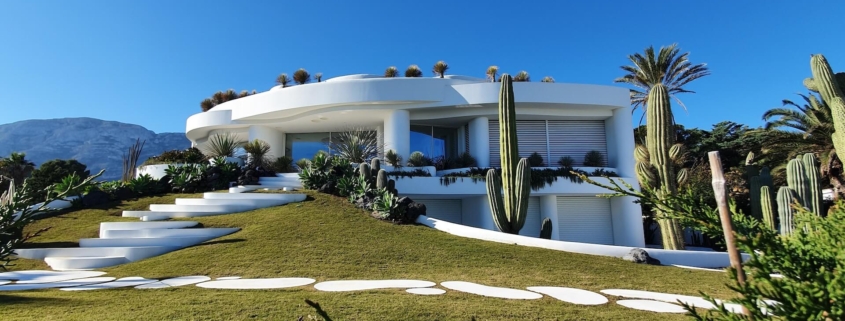Here’s How You Can Design, Technology and Sustainability for a Stunning Landscape!
Do you want to create a stunning Modern architecture landscape that is eco-friendly and efficient? The perfect combination of design, technology, and sustainability can help make this a reality! From knowing the basics about sustainable landscaping to integrating advanced technologies such as specialized irrigation systems, there are numerous ways to create a beautiful environment that’s great for both nature and your wallet. Keep reading to find out how you can use these three components together from start to finish for an overall breathtaking landscape that is also environmentally responsible!
Understanding the Basics of Sustainable Landscaping
As the world becomes more conscious of the impact we have on the environment, sustainable Modern architecture landscaping practices are becoming increasingly popular. From modern architectural designs to virtual reality planning simulations, technology is providing us with new tools to create eco-friendly outdoor spaces. Using 3D software, we can visualize a virtual simulation of our landscaping plans before ever breaking ground. This allows us to make changes and adjustments to our design without impacting the environment. Sustainable landscaping practices not only reduce our carbon footprint, but they also provide us with a beautiful space that helps improve the health of our planet. With the help of technology, we can create a more sustainable future for generations to come.
Save Money and Water with an Efficient Irrigation System
Efficiency is key when it comes to irrigation systems, especially in a world where sustainability and cost-saving measures are becoming increasingly important. With the help of modern technology like 3D software and virtual planning simulation, designing an efficient irrigation system has never been easier. By using these tools, you can visually see the potential system in a virtual reality format, allowing you to identify any areas that may need improvement before any actual resources are used. This not only saves you money but also preserves our water resources. With the incorporation of modern architecture, you can have an innovative and visually pleasing irrigation system that functions efficiently and effectively, all while being environmentally conscious.
Design to Maximize Nature’s Beauty
Design to maximize nature’s beauty has become a growing trend in modern architecture. With the help of 3D software and virtual reality, architects are able to create stunning designs that not only enhance the natural beauty of the surroundings but also contribute to the sustainability of the environment. Virtual planning simulations allow designers to test their ideas and make necessary adjustments before construction begins, ensuring that the final result will be both aesthetically pleasing and functional. Incorporating natural elements, such as green roofs and floor-to-ceiling windows, not only add beauty but also provide added benefits such as lower energy costs and improved air quality. It’s exciting to see how technology is helping us not only appreciate nature’s beauty but also preserve it for future generations.
Utilizing Plants and Trees that Need Less Maintenance
When it comes to modern architecture and landscaping, homeowners and designers are increasingly searching for sustainable and low-maintenance options. One solution that has gained traction is utilizing plants and trees that require less upkeep. With the help of 3D software and virtual reality, planning a garden that is both beautiful and easy to maintain has never been easier. Virtual planning simulations allow designers to see their ideas come to life in real-time, helping homeowners make informed decisions about which plants will thrive in their unique environment. Whether it’s a drought-tolerant garden or a low-maintenance tree that adds architectural interest, incorporating these plants into your landscape design can save time, money, and effort in the long run.
Incorporating Pollinator Habitats for a Healthier Environment
In the rapidly evolving field of modern architecture, there is an increasing focus on creating sustainable designs that promote a healthier environment. One innovative method for achieving this is by incorporating pollinator habitats into building plans. With the help of 3D software and virtual reality technology, architects and developers can simulate and plan these habitats to ensure they are not only attractive, but also functional and effective for supporting pollinators. Through virtual planning simulation, architects can test out various designs and make adjustments to enhance the effectiveness of these habitats. By implementing such measures, we can improve the health and well-being of our environment while still creating beautiful and functional spaces.
Integrating Recycled Materials into Your Landscape Design
When it comes to modern architecture, integrating recycled materials into your landscape design can be a game-changer. With the help of 3D software and virtual reality, you can now create a virtual planning simulation of your dream backyard oasis. Using recycled materials not only reduces waste and helps the environment, but it also adds an interesting element to your design. Imagine a beautiful garden path made from repurposed bricks or a unique outdoor living room created from reclaimed timber. By incorporating recycled materials, you can create a truly unique and sustainable landscape design that will be the envy of your neighborhood.
As the world becomes more conscious of the impact we have on the environment, sustainable landscaping practices are becoming increasingly popular. From modern architectural designs to virtual reality planning simulations, technology is providing us with new tools to create eco-friendly outdoor spaces. Using 3D software, we can visualize a virtual simulation of our landscaping plans before ever breaking ground. This allows us to make changes and adjustments to our design without impacting the environment. Sustainable landscaping practices not only reduce our carbon footprint, but they also provide us with a beautiful space that helps improve the health of our planet. With the help of technology, we can create a more sustainable future for generations to come.



